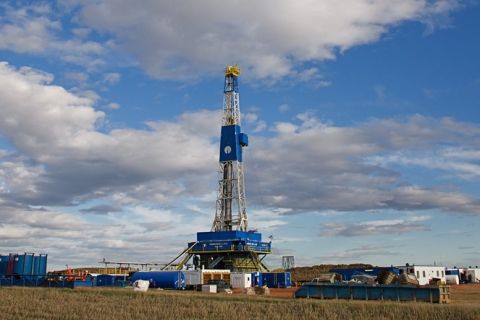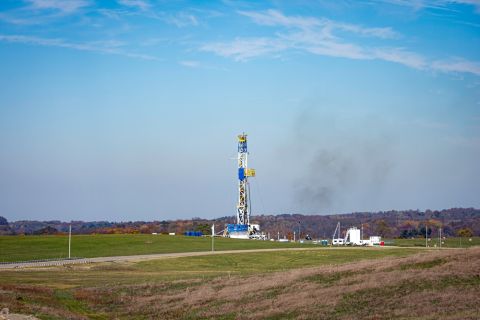On April 17, 2012, the Environmental Protection Agency (EPA) issued final rules regarding air emissions from oil and gas production and related facilities. The rules came with some publicity, especially regarding a key green-completion provision, whose effective date the EPA delayed until January 1, 2015.
While some press reports may have left the impression that the EPA delayed all requirements of the new regulations until January 1, 2015, this is not the case. The new regulations impose significant requirements that become effective in 2012. Other requirements become effective in 2013. An upstream or midstream operator that thinks it can safely ignore the regulations until 2015 could be unpleasantly surprised by an enforcement action that brings severe penalties.
The EPA issued the regulations in accordance with a court order that resulted from litigation filed by environmental groups. As that court order required, the EPA proposed the regulations in summer 2011. The proposed regulations required newly drilled natural gas wells that use hydraulic fracturing to employ a reduced emission completion, often called a green completion.
The proposed rules were the subject of some controversy, mainly due to industry concerns that equipment for green completions might not be available. In that case, the requirement for green completions could drastically curtail domestic gas production. In response to comments raising this concern, EPA’s final rules do not require immediate compliance with the green-completion requirement, in most cases. Rather, the general requirement to use green completions becomes effective as of January 1, 2015.
Effective in 2012 or 2013
Other requirements within the regulations become effective before January 1, 2015, however, with some taking effect in 2012. Moreover, to the extent that states or localities require green completions before January 1, 2015, language in the new regulations provides the EPA or environmental groups with the argument that a state or local green-completion requirement is federally enforceable and subject to the potentially large penalties for violating the federal Clean Air Act.
Publication of the final rules in the Federal Register was expected within a few weeks of their issuance, but as of press time, they had not yet been published. Once the agency publishes the regulations, the implementation time frame varies. Some of the EPA requirements that become effective in 2012 or 2013 are:
• Hydraulically fractured natural gas wells will need to route flowback emissions to a completion combustion device, (flare), a requirement effective 60 days after publication in the Federal Register. For most natural gas wells with hydraulic fracturing, the regulations require green completions as of January 1, 2015, to accompany the completion combustion device. However, for wildcat, delineation and low pressure wells, use of the completion combustion device, but not green completions, remains the requirement after January 1, 2015. (40 CFR § 60.5375)
• Centrifugal compressors with wet seals used for natural gas production and processing, up to the point at which the gas enters transmission and storage facilities, must reduce emissions by 95%, a requirement effective 60 days after publication in the Federal Register. (40 CFR § 60.5380)
• Owners or operators of reciprocating compressors, installed between the wellhead and the point of custody transfer to natural gas transmission and storage facilities, must change the rod packing after 26,000 hours or after 36 months, a requirement effective 60 days after publication in the Federal Register. (40 CFR § 60.5385)
• Continuous bleed, natural gas-driven pneumatic controllers at gas processing plants must have a natural gas bleed rate of zero, a requirement effective 60 days after publication in the Federal Register. (40 CFR § 60.5390)
• Continuous bleed, natural gas-driven pneumatic controllers with a bleed rate greater than 6 standard cubic feet per hour (scfh,) installed between the wellhead and natural gas processing plant, must have a gas bleed rate of less than 6 scfh, a requirement effective one year after publication in the Federal Register. (40 CFR § 60.5390)
• Storage vessels in oil and gas production, natural gas processing, natural gas transmission or storage facilities with volatile organic compound emissions equal to or greater than six tons per year, must reduce emissions by 95%, a requirement effective one year after publication in the Federal Register. (40 CFR § 5395)
• Onshore gas processing plants must have a leak detection and repair program, a requirement effective 60 days after publication in the Federal Register. (40 CFR § 60.5400-5402)
• Sweetening units at onshore natural gas processing plants must reduce sulfur dioxide emissions based on sulfur feed rate and sulfur content of acid gas, a requirement effective 60 days after publication in the Federal Register. (40 CFR § 60.5405)
• Small glycol dehydration units must comply with new control technology standards and submit an initial notification within one year and 60 days after publication in the Federal Register. (40 CFR § 63.760-775)
• The regulations have other rules affecting gas processing plants, and these rules become effective on various dates, based on the publication in the Federal Register. (40 CFR § 60.5400-5423)
Owners and operators of facilities subject to these regulations will have significant compliance responsibilities in 2012. Others are effective in later years, but still before January 2, 2015.
Green-completion requirements
While the nationwide green-completion requirement is delayed until January 1, 2015, owners and operators might need to use green completions before that date to comply with state or local requirements. The text and preamble of the new regulations specifically refer to such requirements, and these state or local requirements could become federally enforceable prior to 2015.
To the extent a state green-completion requirement is part of a state implementation plan (SIP) approved by the EPA, then that requirement might be currently federally enforceable.
Also, the new regulations, in the text and the preamble, specifically refer to state and local requirements. The specific portion that extends the green completion requirement to 2015 states, “unless a more stringent state or local emission control requirement is applicable…” (40 CFR § 60.5375 (a)).
As mentioned previously, this language provides at least an argument for EPA, or an environmental group, that a state or local green-completion requirement is federally enforceable, and subject to the full penalties in the federal Clean Air Act, even if not part of a SIP.
Jim Smith is a partner in the environmental section of Porter Hedges. His practice principally focuses on environmental matters. He primarily represents companies in refining, petrochemical and other resource-related industries.
Recommended Reading
Chord Buying Enerplus to Create a Bakken Behemoth
2024-02-22 - Chord Energy said Feb. 21 it will acquire Enerplus Corp. for nearly $4 billion in a stock-and-cash deal to potentially create the largest producer in the Williston Basin.
Williston Warriors: Enerplus’ Long Bakken Run Ends in $4B Chord Deal
2024-02-22 - Chord Energy and Enerplus are combining to create an $11 billion Williston Basin operator. The deal ends a long run in the Bakken for Enerplus, which bet on the emerging horizontal shale play in Montana nearly two decades ago.
Ohio Oil, Appalachia Gas Plays Ripe for Consolidation
2024-04-09 - With buyers “starved” for top-tier natural gas assets, Appalachia could become a dealmaking hotspot in the coming years. Operators, analysts and investors are also closely watching what comes out of the ground in the Ohio Utica oil fairway.
Chord, Enerplus’ $4B Deal Clears Antitrust Hurdle Amid FTC Scrutiny
2024-04-08 - Chord Energy and Enerplus Corp.’s $4 billion deal is moving forward as deals by Chesapeake, Exxon Mobil and Chevron experience delays from the Federal Trade Commission’s requests for more information.
EIA: E&P Dealmaking Activity Soars to $234 Billion in ‘23
2024-03-19 - Oil and gas E&Ps spent a collective $234 billion on corporate M&A and asset acquisitions in 2023, the most in more than a decade, the U.S. Energy Information Administration reported.





